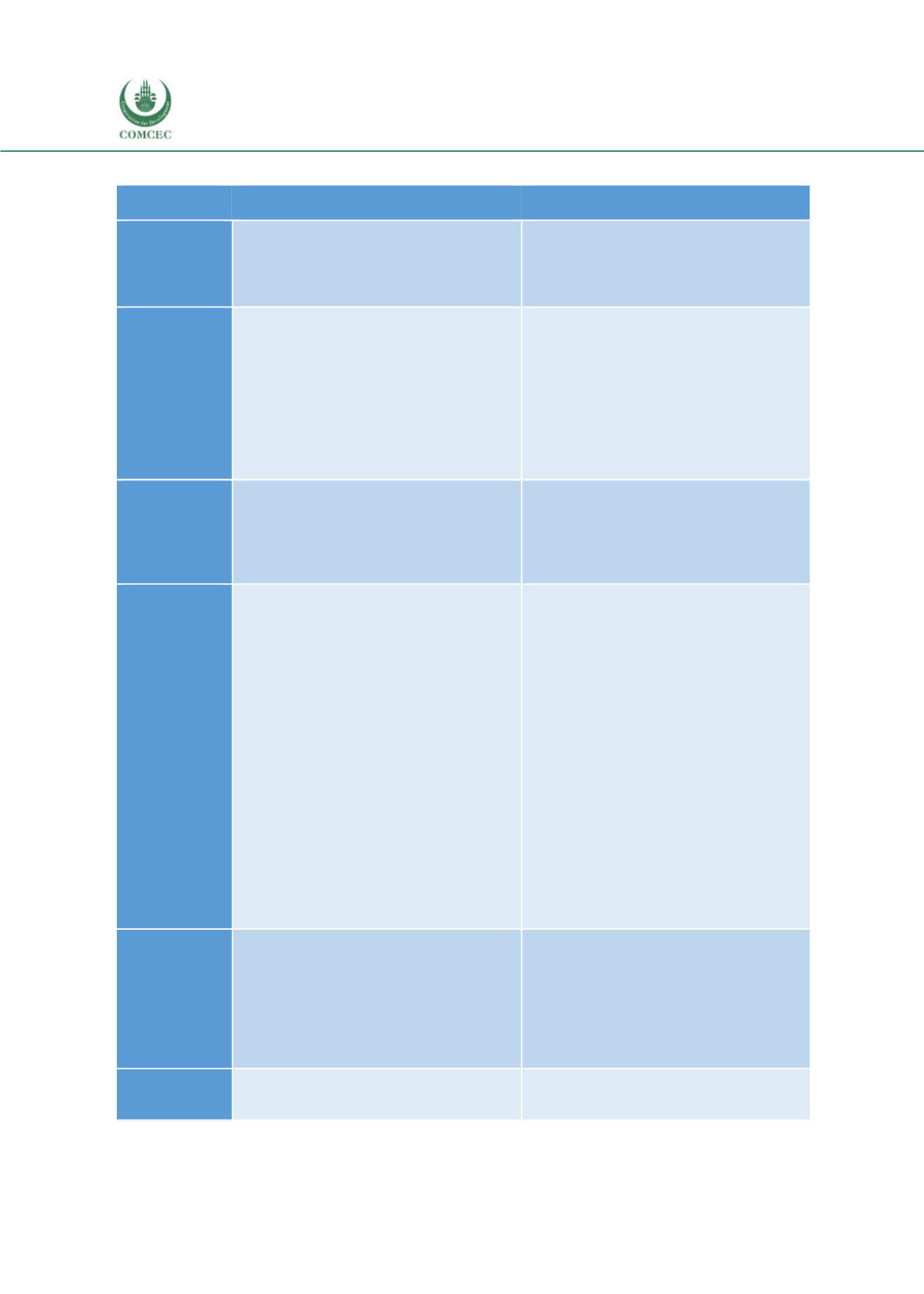

Increasing the Resilience of the Food Systems
In Islamic States in Face of Future Food Crises
68
Lessons learned
Area
Lessons and examples for the OIC to draw
upon
Where experience differs from the OIC
Government
Policy and
Structure
The U.S. has well-funded governmental
institutions that have clear responsibilities
that map onto each pillar of food security.
It is difficult to establish such institutions
and have themoperate effectively
overnight. OIC countries need to transition
to full maturity and may need to consider
alternatives to current the U.S. system.
Monitoring
The U.S. has been involved in extensive
monitoring of households and data
collection, a process which began 20 years
ago, and has ensured a robust
understanding.
Real time monitoring of risks across the
value chain have helped the U.S. identify
and respond rapidly.
Establishing such processes is imperative
but may be impeded in particular in Least
Developed OIC countries by a lack of
financial resources and limited technology
infrastructure.
Supplementary support would be required
by pan-OIC bodies to fund research and
routine data collection, as well as real-time
risk tracking.
Mitigation
The U.S. conducts extensive monitoring
across the value chain, tracking thousands
of KPIs to monitor risks and to keep the
food system safe. Understanding those
KPIs in detail is critical for the OIC to stay
ahead of potential crises.
The OIC cannot copy exactly what the U.S.
does because in many countries, systems
are less developed, and data may be harder
to obtain.
Adaptation and
Mitigation
The U.S. has adapted through establishing
robust social safety nets that identifies and
supports vulnerable households, women
and children.
The U.S. is involved in extensive risk
screening that constantly evolve, such as
dedicated screening to defend the food
supply chain against intentional
adulteration, which may be undertaken to
intentionally harm the food system.
Furthermore, extensive mitigation is
undertaken, in particular through support
to the agriculture sector, including
insurance funding.
Individual OIC countries may not have the
ability to fund safety nets on their own and
may need valuable partnerships to secure
funding.
Risk screening may need to be conducted
at the OIC level, as many countries may not
be able to effectively operate at the same
level as the U.S.
Protecting the supply chain is important
for OIC countries, in particular, ensuring
imports meet a minimum standard of
quality. This can also mitigate against
potential intentional adulteration of the
food supply chain.
Furthermore, financial products and
investments may be more effectively made
the OIC level.
Building
Resilience
R&D funding has been a cornerstone of the
U.S.’s successful Agricultural Policy over
almost two decades, with a robust
partnership developed with the private
and public sector.
R&D funding is similarly critical to the OIC
but is impeded in particular in LDC’s
where there is a lack of resources and less
effective government infrastructure.
To mitigate such limitations, a pan-OIC
level initiative to fund technology research
and adoption is needed
Cooperation
The U.S. has benefitted substantially from
free trade agreements, with intra-OIC an
important aspect of enhancing OIC trade.
The U.S. has leveraged its strong position
as an export leader in Agricultural
Products to support other countries.
















